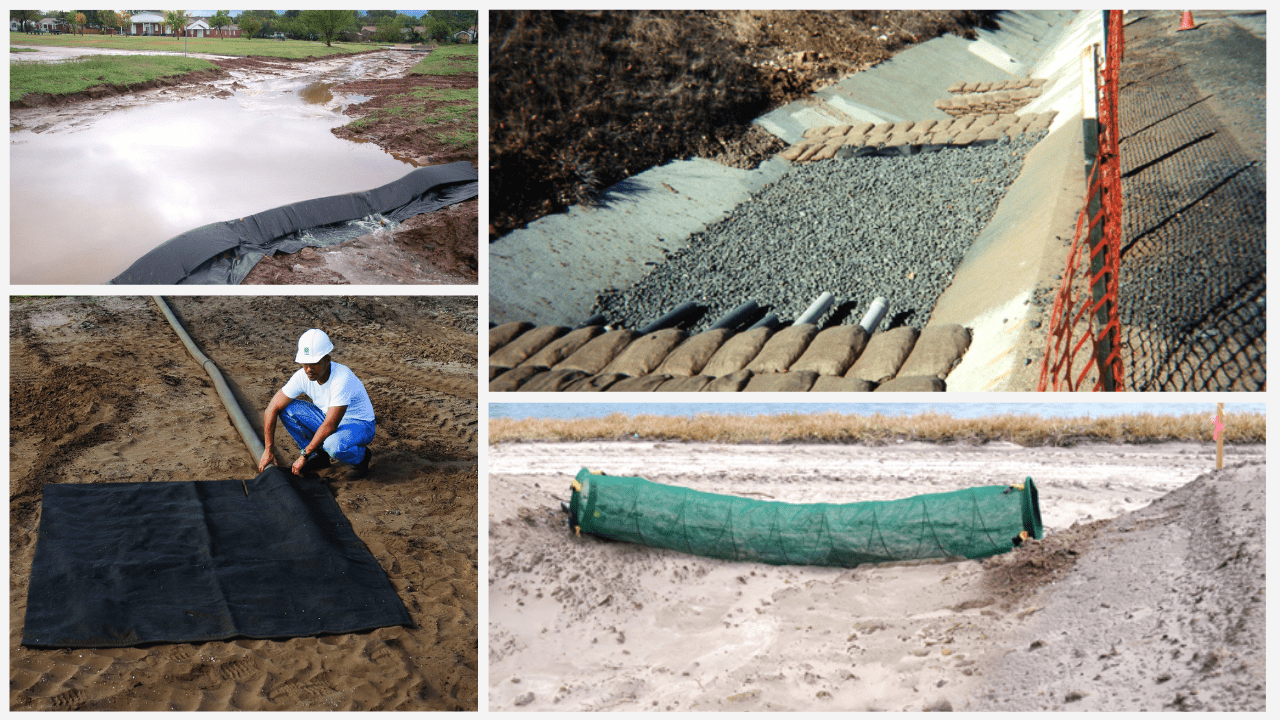Erosion from wind and water is a common challenge on construction sites. Without grass, bushes, trees, or other vegetation to anchor the soil, running rainwater can very quickly cut its way through open areas, taking the soil with it.
Not only does erosion threaten the integrity of the construction site and the new structure being built upon it, but also the environment surrounding the site. In most places, developers can face hefty fines—sometimes tens of thousands of dollars each day—for non-compliance with federal, state, or local erosion control regulations.
Most states in the U.S. provide a guide or manual of sorts—usually available online—to better understand and comply with erosion control regulations in their area. While many of these guides appear to be dated, best-practice erosion control procedures haven’t really changed all that much over the years.
There has, however, been significant innovation in the erosion control products landscape, including the advent of lighter-weight materials, more compact designs, and reusable erosion control products.
Here are some of the more popular erosion control products being used at construction sites worldwide to successfully stop erosion and prevent damage to the environment:
Silt Fencing
A quick glance at almost any construction site, and you’re likely to see the [usually] black geotextile fencing surrounding the outermost perimeter of the site. This is a silt fence and it is designed to control erosion by stopping stormwater runoff almost completely, thereby “ponding” the water at the fence. Over time, the trapped water and sediment soak back into the ground or, in some cases, the sediment accumulates at the fence, where it should be collected and re-distributed.
Silt fencing is cost-effective and can be rapidly deployed, which is why it is so popular. Unfortunately, silt fences are oftentimes poorly installed, allowing water and sediment to wash through or under the fence.
Here at UltraTech, we don’t manufacture silt fencing, but we do have a few great alternatives, like our Ultra-Silk Dike and Ultra-Erosion Guard. More on those below.
Silt Dikes
While not a well-known erosion control product just yet, silt dikes are an effective and economical alternative to silt fences, straw bales, and rock check dams.
Our own Ultra-Silk Dike is a patented barrier made from urethane foam and geotextile fabric. It is designed with protective aprons on both sides of the battier, with just a single sewn seam on the upstream side. This allows the barrier to be configured for several different applications and will conform to rough terrain.
Silt dikes can also be deployed for use as ditch check dams, temporary ditch liners, diversion dikes, steam and pond protection. They are quickly installed using u-shaped wire staples through the apron and into the soil.
Erosion Guards
Reducing the velocity of rainwater runoff, while capturing sand and soil being washed away with it, is the next best thing to preventing the runoff in the first place.
While silt fences certainly have their place, some areas, like ditches, gullies, and slopes, are difficult for silt fencing to conform to. That means stormwater runoff will flow through or under these areas, oftentimes at higher velocities.
A product such as our own Ultra-Erosion Guard is designed to stop erosion where stormwater runoff either must or will flow vs. the ponding effect of a silt fence. The product is made from a lightweight green mesh fabric and deploys instantly, as the heavy-duty steel springs inside of the device expand when needed. Its integrated polypropylene black skirt helps to hold the unit in place with dirt, rocks, or stakes.
Gravel Bags
Gravel bags are a tried-and-true method of stormwater sediment and erosion control. They’re usually sold empty then filled with sand, gravel or other aggregates to create quick and versatile erosion control. It is important to note that the flow rate of gravel bags will depend on the size and amount of aggregate inside.
One problem with typical gravel bags is that they break down too quickly, especially when exposed to outdoor elements for extended periods of time. So look for gravel bags with a high UV rating, like our own Ultra-Gravel Bags, which are made of a very high-quality polymer material that is woven into shape, eliminating the flaws and failures of sewn edges. In fact, our gravel bags can withstand being driven over.
Dewatering Bags
Draining water from low-lying areas is a common occurrence in construction. Unfortunately, this process, called “dewatering,” also tends to remove a lot of dirt, silt, mud, and debris along with the water. These contaminants can cause problems if they are simply discharged into a storm drain.
A proper dewatering bag—which water from the low-lying area is pumped into—filters the silt, dirt, sand, and other pollutants by trapping them into the bag so that only water escapes to the ground below or into nearby storm drains. Our own Ultra-Dewatering Bag also traps oil and is available in several sizes ranging from 3’ to 15’.
Dewatering bags are deployed by laying them on an area of ground that can absorb the water being removed from the low-lying area. They connect to the pump via a common discharge hose. To increase the efficiency of filtration, place the dewatering bag on an aggregate or haybale bed.






